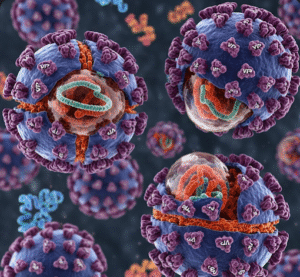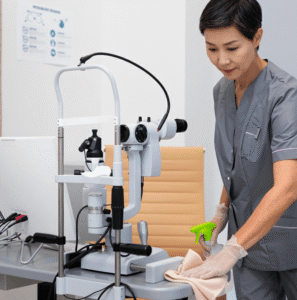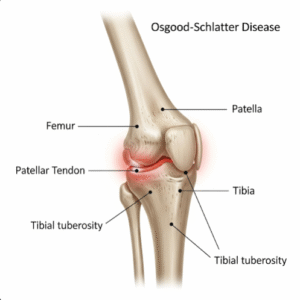Overview
Priapism is a prolonged and often painful erection of the penis that occurs without sexual stimulation and lasts more than four hours. It is considered a medical emergency because delayed treatment can cause permanent erectile dysfunction, tissue damage, or scarring.
Priapism can affect men of all ages but is most common in young adults and individuals with blood disorders such as sickle cell disease. In Korea, specialized urology and emergency care centers provide rapid evaluation, treatment, and long-term management to prevent complications.
➤ Painful, prolonged erection lasting more than 4 hours
➤ Occurs without sexual stimulation
➤ Requires urgent medical attention to prevent permanent damage
Key Facts
➤ Priapism is classified into ischemic (low-flow), non-ischemic (high-flow), and stuttering (recurrent) types.
➤ Ischemic priapism is the most common and most dangerous, requiring immediate intervention.
➤ Symptoms often include severe penile pain, rigidity, and swelling.
➤ Underlying causes include blood disorders, medications, trauma, and neurological conditions.
➤ Korean hospitals provide advanced diagnostic tools, surgical interventions, and pharmacological therapy to manage priapism effectively.
What is Priapism?
Priapism is a condition characterized by prolonged, involuntary penile erection that can be painful or painless depending on type:
➤ Ischemic (Low-Flow) Priapism:
➤ Most common type, caused by blood being trapped in the erectile tissue.
➤ Painful and requires emergency treatment.
➤ Prolonged ischemia can cause tissue damage and erectile dysfunction.
➤ Non-Ischemic (High-Flow) Priapism:
➤ Usually caused by trauma to the penis or perineum, resulting in unregulated blood flow.
➤ Often less painful and may resolve without urgent intervention.
➤ Stuttering Priapism:
➤ Recurrent episodes of ischemic priapism that come and go.
➤ Often associated with sickle cell disease or other blood disorders.
What Symptoms Are Related To
Priapism presents with distinct and sometimes alarming symptoms:
➤ Erection lasting longer than four hours.
➤ Penile rigidity, typically involving the shaft but sparing the glans in ischemic priapism.
➤ Severe penile pain, especially in ischemic cases.
➤ Swelling or tenderness of the penis.
➤ Recurrent episodes in stuttering priapism.
➤ Potential urinary discomfort due to swelling or pressure.
What Causes / Possible Causes
Priapism can arise from hematological, pharmacological, traumatic, or neurological causes:
➤ Hematological Disorders
➤ Sickle cell disease: Abnormal red blood cells block blood flow in erectile tissue.
➤ Leukemia or polycythemia: Increased blood viscosity or cell counts can cause trapping of blood.
➤ Medications and Substances
➤ Erectile dysfunction drugs (e.g., sildenafil) when overdosed or combined with other medications.
➤ Antidepressants, antipsychotics, or recreational drugs such as cocaine.
➤ Trauma or Injury
➤ Perineal or penile injury causing high-flow priapism.
➤ Pelvic fractures may also contribute.
➤ Neurological Causes
➤ Spinal cord injuries or nerve dysfunction affecting erectile regulation.
➤ Idiopathic Causes
➤ Sometimes priapism occurs without a clear cause, particularly in young, otherwise healthy men.
When Should I See My Doctor
Priapism is a true urological emergency, and immediate medical care is crucial if:
➤ Erection lasts more than four hours.
➤ There is severe penile pain, swelling, or discoloration.
➤ Priapism is recurrent or associated with blood disorders.
➤ Symptoms appear after medication use or trauma.
➤ Delaying treatment can result in permanent erectile dysfunction or penile tissue necrosis.
Early intervention ensures rapid relief, prevention of tissue damage, and preservation of sexual function.
Care and Treatment
Treatment depends on the type, duration, and underlying cause:
➤ Immediate Medical Management (Ischemic Priapism)
➤ Aspiration of blood from the corpora cavernosa to relieve pressure.
➤ Intracavernosal injection of sympathomimetic drugs (e.g., phenylephrine).
➤ Pain management with analgesics or sedation.
➤ Non-Ischemic Priapism
➤ Often self-limiting, but embolization or surgical intervention may be necessary for persistent cases.
➤ Stuttering Priapism
➤ Preventive measures include hydration, medication adjustment, or long-term pharmacotherapy.
➤ Sickle cell management with hydration, oxygen, or blood transfusions in appropriate cases.
➤ Supportive Care
➤ Avoid trauma or sexual activity until fully resolved.
➤ Psychological support may be needed for anxiety related to recurrent priapism.
Treatment Options in Korea
Korea provides rapid and advanced urological care for priapism with multidisciplinary expertise:
➤ Top Hospitals for Urology & Emergency Care
➤ Asan Medical Center (Seoul): Emergency management, aspiration, and surgical intervention.
➤ Samsung Medical Center: Advanced imaging, interventional radiology, and pharmacological treatment.
➤ Seoul National University Hospital (SNUH): Multidisciplinary approach for hematological and traumatic causes.
➤ Yonsei Severance Hospital: Specialized urology and rehabilitation for long-term erectile function preservation.
➤ Advanced Diagnostic Tools
➤ Doppler ultrasound to differentiate ischemic vs. non-ischemic priapism.
➤ Blood tests for hematological disorders or metabolic abnormalities.
➤ MRI or CT in cases of trauma or suspected structural injury.
➤ Modern Interventions
➤ Minimally invasive embolization or aspiration procedures.
➤ Pharmacological management with sympathomimetics.
➤ Multidisciplinary follow-up for prevention and recurrence management.













